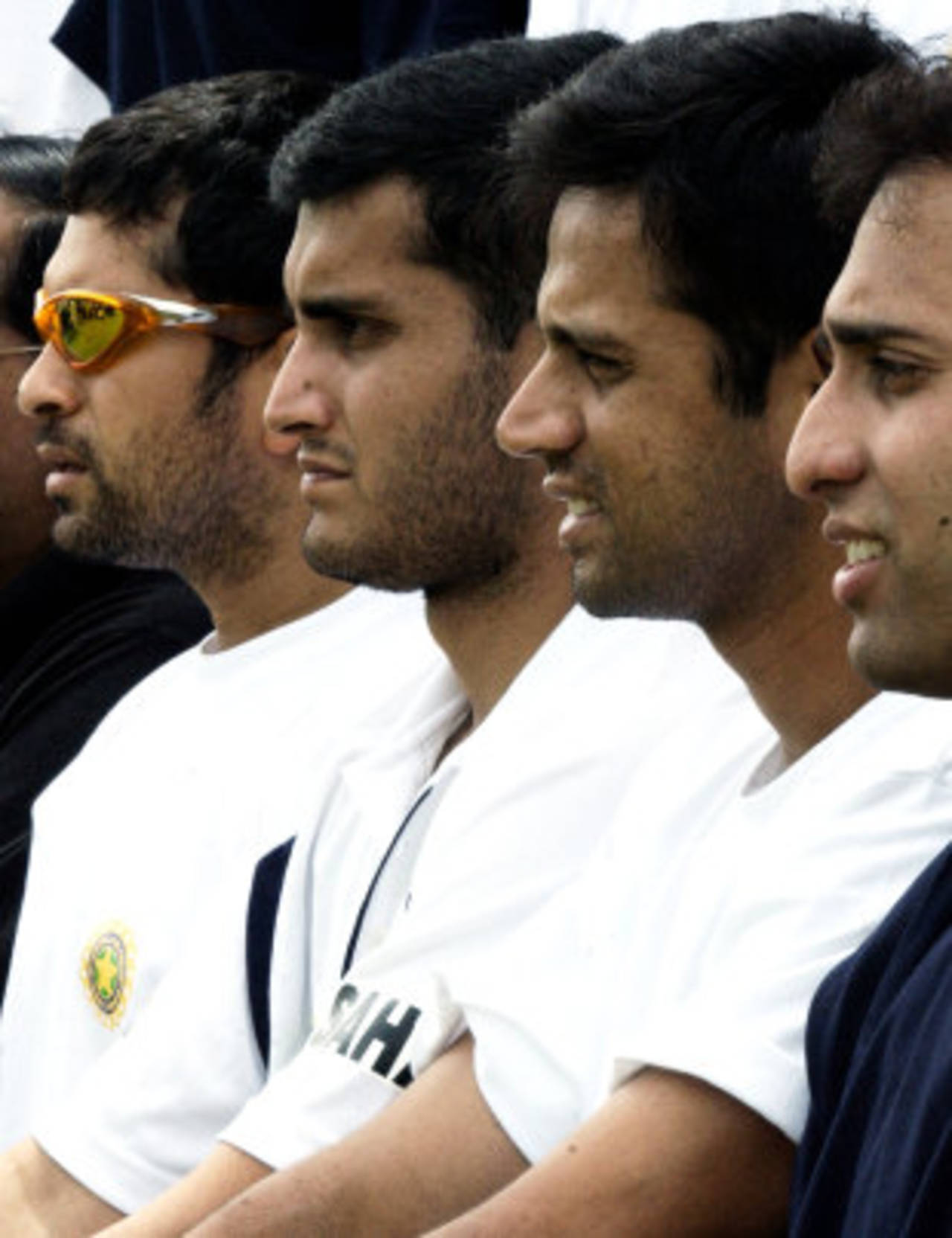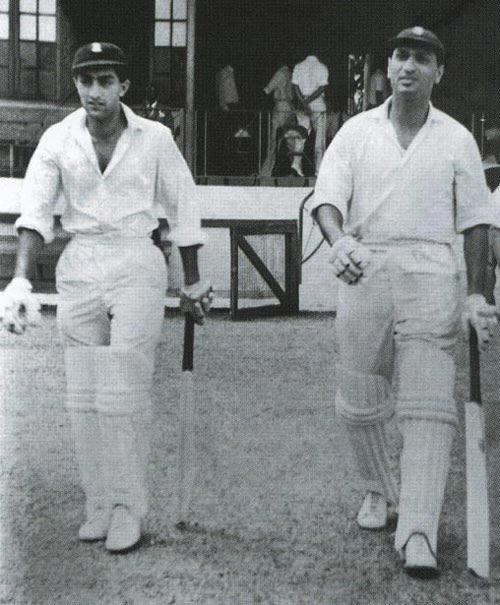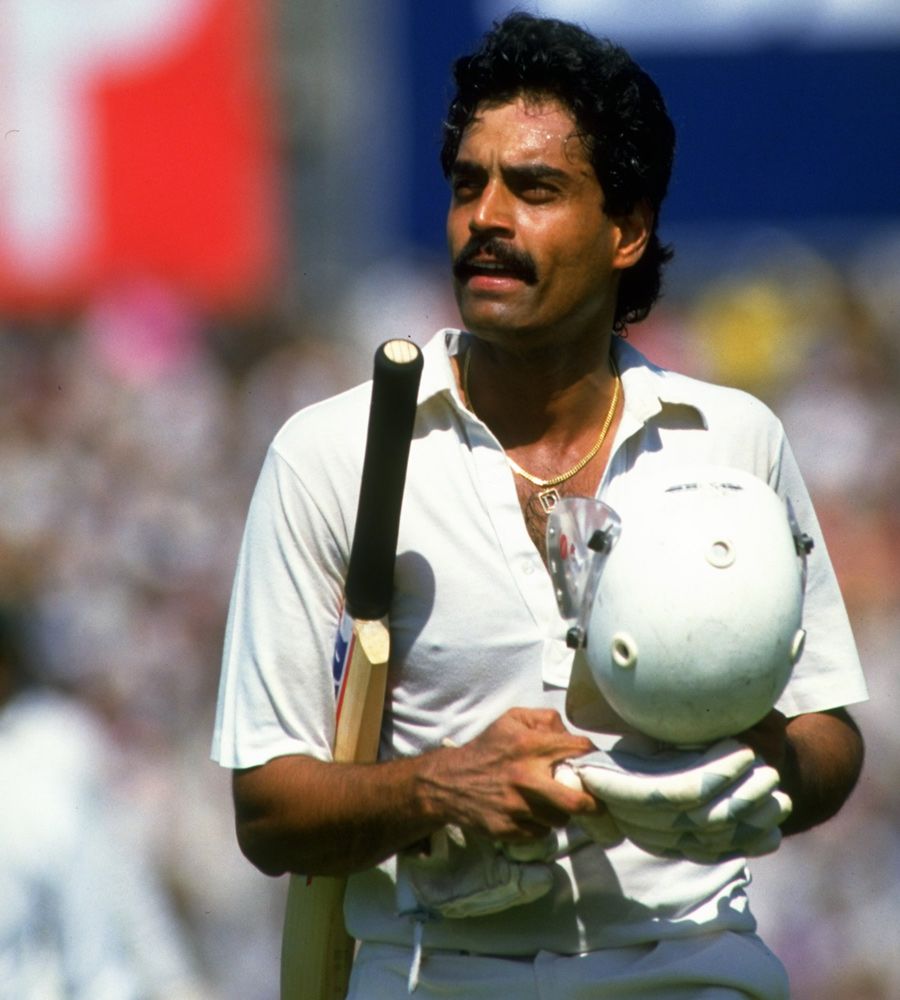Modern masters or stalwarts of old?
Will the picks skew towards the current crop, or will the Vishys and Hazares get a look in?

The Fab Four: how many of them will make the all-time India middle order? • Indranil Mukherjee/AFP
The candidates
 |
The finest No. 3 in the history of Indian cricket, and one of the best ever. A one-day aggregate of over 10,000 suggests that he can adapt his game. His record away from home makes him the most valuable batsman when the ball does things domestic players are unused to.
 |
Most runs, centuries, Test matches, and the man Don Bradman thought played like him. Enough said.
 |
Played one of the most valuable innings, 281, by an Indian. It led to a win after following on against Australia and the start of the run that saw India finish as the No. 1 Test team in the world. In an age of utilitarian batsmen, his batting remains a visual delight.
 |
Has anybody been more pleasing to watch than this wonderful player of pace and spin alike? Carried the middle order on his shoulders for a decade, attacking the best fast bowlers and throwing the finest spinners off their length with creative batsmanship.
 |
Two hundreds on successive days against Don Bradman's Australia, and the Don's wicket in the same Test. He was India's first Test-winning captain, and the finest batsman in the middle till Viswanath.
 |
Led the self-respect movement in Indian cricket, inspiring the team into believing they could win. Trevor Bailey once said Pataudi might have been in the Bradman class if it were not for his handicap. Six Test centuries and innings of 75 and 85 in Melbourne in 1967, despite a pulled hamstring, established him as the Indian batsman of the 60s.
 |
Successful series against the best fast bowling in the world, in Pakistan and the West Indies, earned him the right to be labelled the best for a while. Innings of 90 and 100 in Perth had already hinted at what was to come. As a medium-pacer, he gives the captain more options.
 |
His 12 centuries formed the mark Indians aimed at, till Sunil Gavaskar made such calculations redundant. Innings of 56 and 172 not out in Trinidad in 1962 (he had five wickets in the first innings, besides) seemed to repeat Vinoo Mankad's famous Lord's performance of 1952.
 |
The only left hander in the list, but that is not the only reason he is there. His average of 42.17 over 113 Tests compares favourably with Viswanath's 41.93 (91 Tests) and Dilip Vengsarkar's 42.13 (116 Tests). India's most successful Test captain, besides.
 |
Was already 37 when he led India in their first Test, and was playing first-class cricket a quarter century later. Nayudu top-scored in the first innings at Lord's. He never lived up to his reputation as a six-hitting bowlers' nightmare in the seven Tests he played, but was an inspiring figure who put India on the international map.
 |
Belonged to the Viswanath tradition of wristy batsmanship. He never really had to shoulder the batting on his own, though, since in his early days Vengsarkar or Mohinder Amarnath did that job, and soon Tendulkar arrived.
 |
The link between the Gavaskar and Tendulkar generations, he held the middle order together, once making 166 against Sri Lanka on a dodgy track when no one else made more than 60. His three centuries at Lord's and six against West Indies' pace made him the most valuable player in the middle order in his time.
Suresh Menon is a writer based in Bangalore